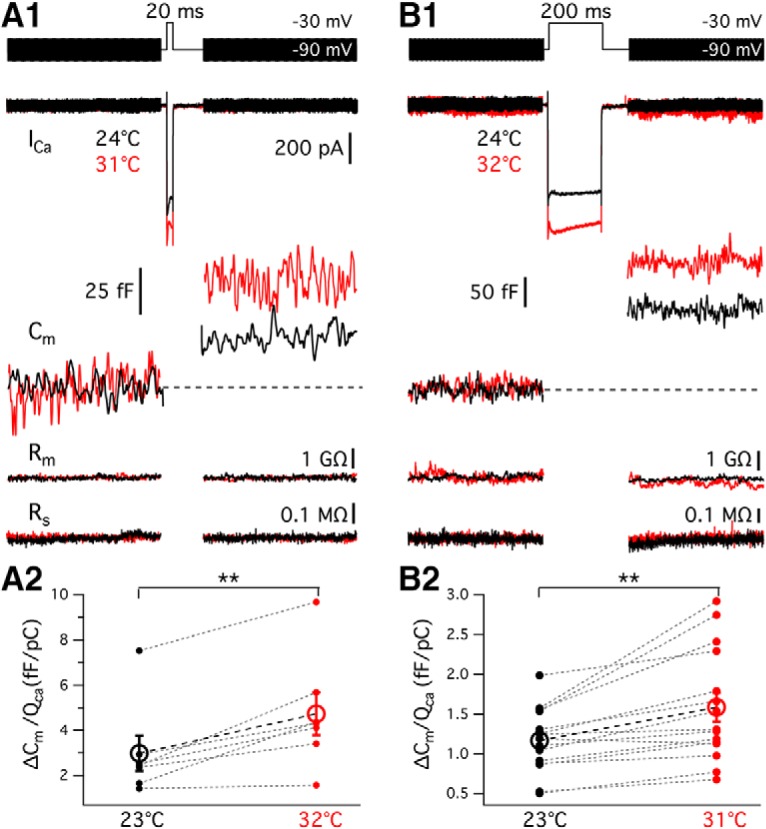Figure 8.

Hair cell exocytosis efficiency is enhanced at high temperature. A1, B1, The Ca2+ current (ICa), membrane capacitance (Cm), membrane resistance (Rm), and series resistance (Rs) traces obtained from a hair cell. A ΔCm change was triggered by 20 ms (A1) and 200 ms (B1) depolarizing steps from −90 mV to −30 mV at room (black) and high (red) temperature. For the 20 ms depolarization: Ihold = −60 and −64 pA; Cm(resting) = 14.5 and 16.0 pF; Rm = 1.3 and 1.2 GΩ; Rs = 8.9 and 8.2 mΩ, at 24°C and 31°C, respectively. For recordings of 200 ms depolarization: Ihold = −69 and −43 pA; Cm(resting) = 11.3 and 12.8 pF; Rm = 1.2 and 1.5 GΩ; Rs = 14.0 and 11.3 mΩ at 24°C and 32°C, respectively. Exocytosis efficiency, calculated as the ratio of ΔCm/QCa2+, is shown for (A2) 20 ms (p = 0.0043, n = 7) and (B2) 200 ms (p = 0.0013, n = 15) depolarizations. The exocytosis efficiency is nearly threefold greater for the short 20 ms pulse than for the long 200 ms pulse. **p < 0.01.
